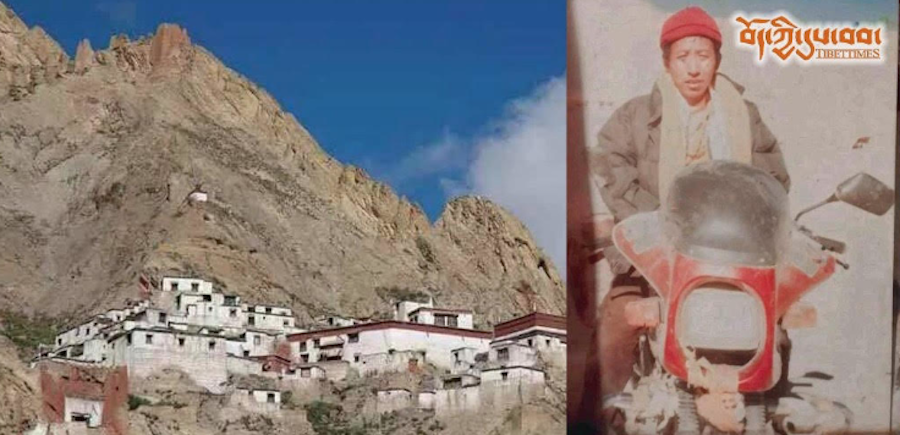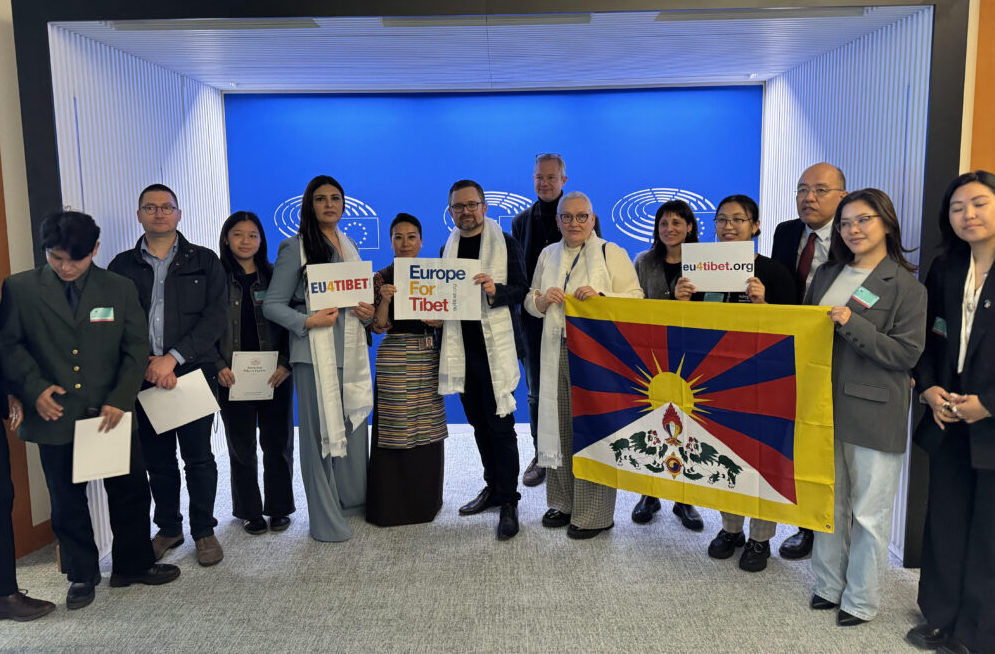By ByAmelia Hansen,
STAFF WRITER
HALF MOON BAY – Dr. Nancy Harris may be one of the few Bay Area residents who suffers from culture shock as result of her commute.
Last week Harris, who lives half the year in Moss Beach, returned from Lhasa, Tibet, where she’s been working as a physician in local communities since 1990.
“It’s definitely a contrast coming back to an affluent society after living and working in a poverty-stricken, third world environment,” said Harris, 47. “But the San Francisco Bay Area has got to be one of the easiest places to come back to — it’s so multicultural, flexible.”
On Sunday afternoon, Harris — wearing long, ornate gold earrings and a delicately embroidered black vest — pushed aside her jet-lag and greeted a group of friends, local artists, and volunteers who had gathered to celebrate the Tibetan New Year and help raise funds for the Tibet Child Nutrition and Collaborative Health Project.
Founded by Harris in 1993, the project was originally funded by a seed grant from a private U.S. foundation, and designed to gather information about child survival in Tibet — or the “Tibet Autonomous Region,” the high, mountainous area governed by China.
The original surveys, which examined 2,500 Tibetan children, showed that 40 percent were suffering from malnutrition and 67 percent from vitamin-D deficiency, or rickets.
Each year since 1990, Harris has spent between six and eight months of the year with a team of Tibetan and American volunteers and health care workers to administer vitamin supplements, tuberculosis medications, and X-ray services.
In 2000, Harris’ project became an official nonprofit organization — now called the “Terma Foundation” — which operates on a budget of about $400,000 a year.
“The Tibetans are incredibly receptive to us,” said Harris. “We’ll get thousands coming in for a single aspirin. One aspirin won’t save a life, but I think they find it meaningful, because someone clearly cares enough to come all the way from the United States to help them.”
On Harris’ most recent trip, she hired 10 new Tibetan staff members, and opened a new office in the remote eastern area of Chamdo, 1,500 miles from Potala Palace in Lhasa.
Harris described the area — which she accessed in 20-year-old Land Cruisers over washed-out, switchback roads — as a place where the residents get around on horseback, their black hair worn in tassels on top of their heads.
“It’s other-worldly,” Harris said of Tibet. “There’s incredible beauty on one level and incredible stress on another. When you’re there, you walk between two worlds — the past and the present.”
Carol Guion, a Terma Foundation board member and artist who donated three of her drawings to the silent auction at Sunday’s event, said Harris’ dedication to the Tibetan people is inspiring.
“I don’t need to hang off mountains like Nancy,” she said, “but you see someone as dedicated as her, and you can’t help but want to be involved.”
Harris, who treats up to 250 people a day when she’s in Tibet, lives with minimal amenities. Her average room, she said, is not much bigger than a bathroom, with no heat, and little electricity. If she wants to take a hot-water shower, she has to have someone boil water on their roof.
Harris, who is not married and has no children of her own, acknowledges she probably could not have dedicated herself as fully to her work if she lived a more “traditional life” Stateside.
“Tibet,” she said, “is a momentous place to be able to work.”
Staff writer Amelia Hansen can be reached at 348-4301 or by e-mail at ahansen@angnewspapers.com .









